Statin Diabetes Risk Comparison Tool
Compare Statin Diabetes Risk
See how different statins affect diabetes risk based on clinical evidence. This tool helps you understand which statins may be safest for you if you have prediabetes or diabetes risk factors.
Diabetes Risk Comparison
Select a statin to see its diabetes risk comparison
Does Pitavastatin Increase Your Risk of Diabetes?
If you’ve been prescribed pitavastatin - or are considering it - you’ve probably heard the warning: statins can raise your blood sugar. That’s true for some. But not all statins are the same. Pitavastatin stands out. While drugs like atorvastatin and rosuvastatin have been linked to a higher chance of developing type 2 diabetes, pitavastatin doesn’t seem to follow the same pattern. In fact, multiple large studies suggest it may be one of the safest options if you already have prediabetes, metabolic syndrome, or are at high risk for diabetes.
Let’s cut through the noise. You don’t need to choose between lowering your cholesterol and protecting your blood sugar. With pitavastatin, you might be able to do both.
How Pitavastatin Is Different From Other Statins
Pitavastatin is a third-generation statin, approved by the FDA in 2009. Like all statins, it blocks HMG-CoA reductase - the enzyme your liver uses to make cholesterol. But how it’s processed in your body sets it apart.
Most statins rely on liver enzymes called cytochrome P450 to break down. That’s why they interact with so many other drugs - grapefruit juice, antibiotics, even some antifungals. Pitavastatin? It doesn’t. About half of it leaves your body through your kidneys, the other half through your liver. That means fewer drug interactions and more predictable effects.
This unique metabolism might be why it doesn’t mess with your insulin the way other statins do. In a 2018 study published in the Journal of Clinical Endocrinology & Metabolism, researchers gave 4 mg of pitavastatin daily to men with insulin resistance for six months. They used the gold-standard test - the euglycemic hyperinsulinemic clamp - to measure insulin sensitivity. Result? No change. Not a drop. Not a spike. Just stable blood sugar.
The Evidence: Pitavastatin vs. Diabetes Risk
The data is clear when you look at big groups of people.
A 2022 meta-analysis of over 124,000 patients found pitavastatin had a 18% lower risk of new-onset diabetes compared to atorvastatin and rosuvastatin. The hazard ratio? 0.82. That’s not just statistically significant - it’s clinically meaningful.
Compare that to rosuvastatin, which showed a 18% higher risk of diabetes in the same analysis. Atorvastatin? A 14% increase. Simvastatin? A 11% increase. Pitavastatin? Close to neutral - 0.98 in some studies. That’s not just better. It’s the best among statins.
Even population-level data backs this up. A 2015 study of nearly half a million Canadians showed people taking pitavastatin had a 12% lower risk of developing diabetes than those on atorvastatin, and 15% lower than those on rosuvastatin.
And here’s something surprising: no dose-response relationship. You’d think higher doses would mean more blood sugar issues. But studies using doses from 1 mg to 8 mg found no increase in fasting glucose or HbA1c as the dose went up. That’s not true for other statins.
What About the Contradictory Studies?
Not every study agrees. One 2019 study of 3,680 patients in South Korea found pitavastatin had the highest risk of new diabetes among statins - even higher than simvastatin. That study stirred up confusion. But here’s the catch: it was retrospective, meaning it looked back at medical records, not a controlled trial. It didn’t account for baseline risk factors like BMI, age, or fasting glucose. That’s a big flaw.
When you control for those variables - as the bigger, better-designed studies do - pitavastatin consistently comes out on top. The Korean study is an outlier. Most experts don’t treat it as a counter to the overwhelming body of evidence.
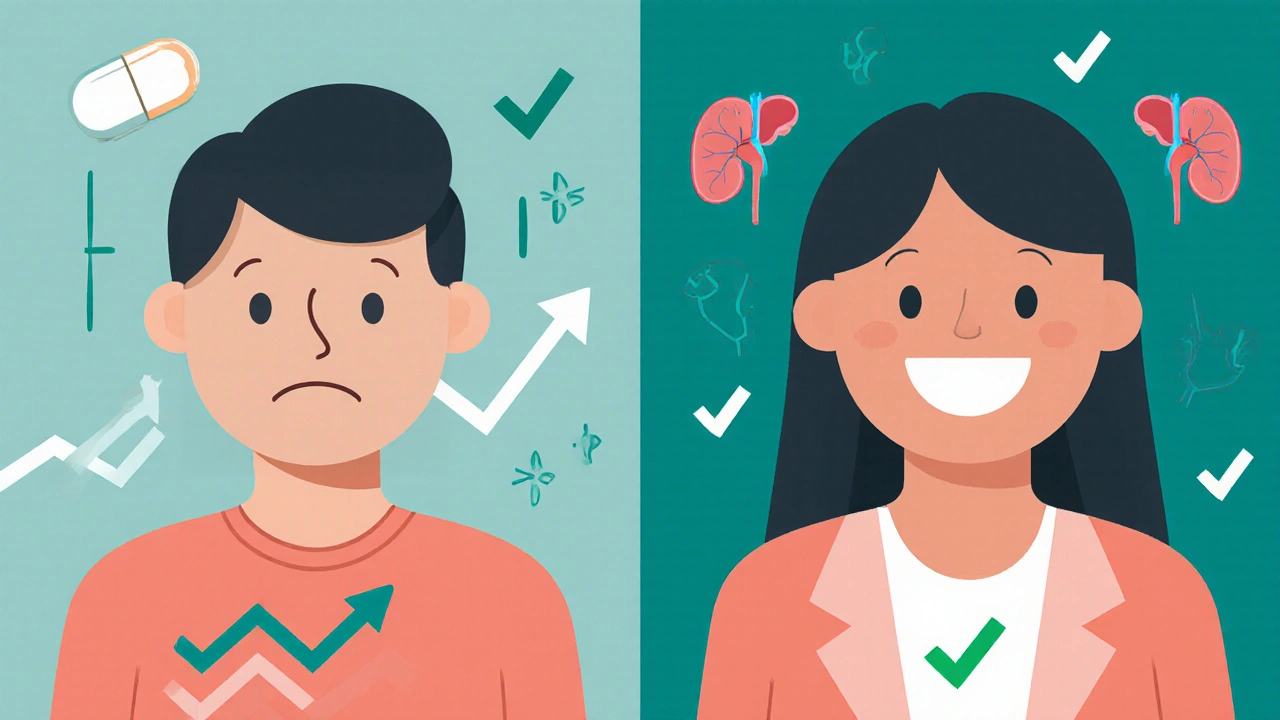
Who Benefits Most From Pitavastatin?
If you’re in one of these groups, pitavastatin deserves serious consideration:
- You have prediabetes (fasting glucose 100-125 mg/dL or HbA1c 5.7%-6.4%)
- Your BMI is 30 or higher
- You have high triglycerides or low HDL
- You’ve been told your cholesterol is high but you’re not yet on a statin
- You’ve tried another statin and your blood sugar went up
A 2024 study of 387 people with HIV - who are at high risk for metabolic issues - found that only those with three or more diabetes risk factors (high BMI, high fasting glucose, high triglycerides) developed diabetes while on pitavastatin. For others? The risk stayed low.
That tells us: pitavastatin isn’t magic. It doesn’t erase your risk. But if you’re not already severely insulin resistant, it won’t make things worse.
What Doctors Are Saying
Endocrinologists and cardiologists are starting to change their prescribing habits.
Dr. Betul Hatipoglu of the Cleveland Clinic says pitavastatin is “the safest statin option for patients with prediabetes.” The American Diabetes Association’s 2022 guidelines say moderate-intensity statins like pitavastatin “may be preferred” in people at high risk for diabetes.
And it’s not just theory. On Reddit’s r/Cardiology, doctors shared real-world experiences: “I’ve switched 20 prediabetic patients from atorvastatin to pitavastatin. Seventeen saw their HbA1c stabilize or drop.”
Even the American Association of Clinical Endocrinologists recommends checking HbA1c before starting any statin - and if you’re high-risk, they now suggest pitavastatin or pravastatin as first choices.
Cost and Access: The Real-World Hurdle
Here’s the catch: pitavastatin isn’t cheap.
Brand-name LIVALO costs around $350 a month without insurance. Generic atorvastatin? Four dollars. That’s a 90% difference.
But here’s what most people don’t know: 92% of Medicare Part D plans cover pitavastatin, and the average co-pay is $45 a month. If you’re on insurance, the gap shrinks. Some pharmacies offer discount programs. And if you’re on Medicaid or have a high-deductible plan, ask your pharmacist - you might be surprised.
Is it worth it? For someone with prediabetes, yes. If your blood sugar climbs on atorvastatin, switching could prevent a diabetes diagnosis - and the long-term costs of that (meds, doctor visits, complications) far outweigh the extra $300 a month.
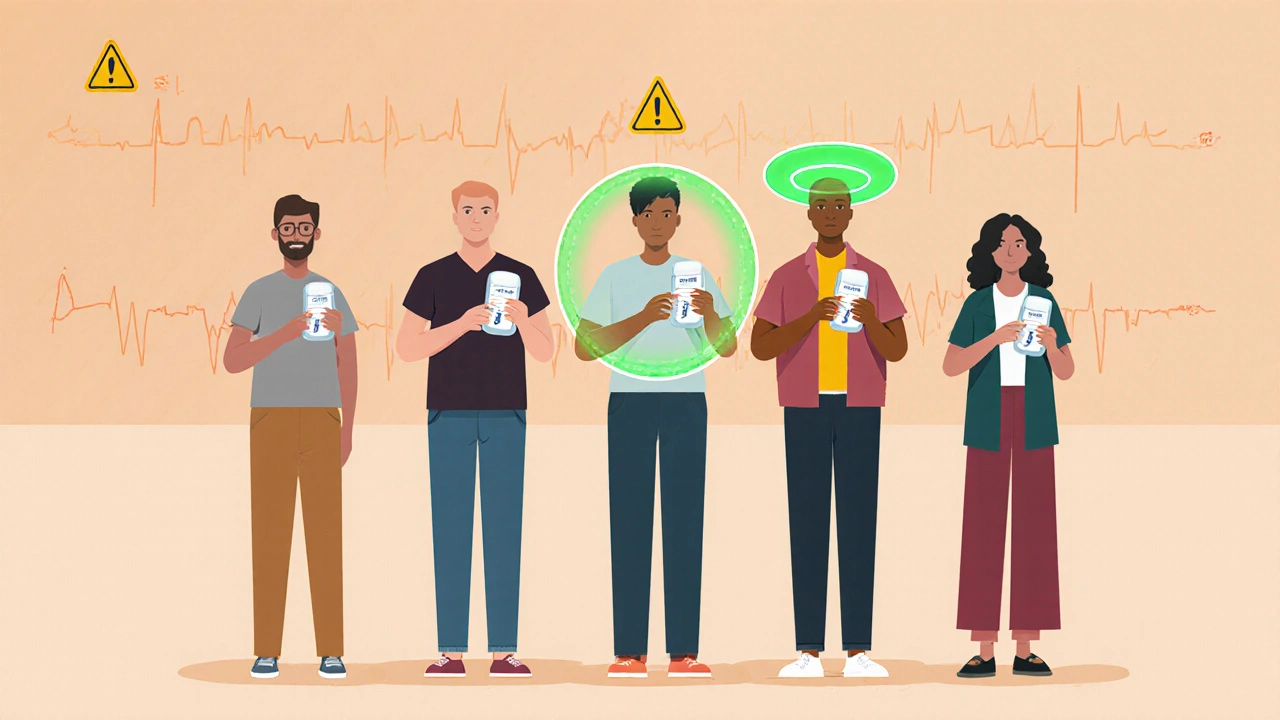
What’s Next? The PERISCOPE Trial
The biggest question left: does pitavastatin protect your heart just as well as other statins - even if it’s gentler on your blood sugar?
That’s what the PERISCOPE trial is trying to answer. It’s a 5,200-patient study comparing pitavastatin 4 mg to atorvastatin 40 mg in people with type 2 diabetes. Results are expected by late 2026.
If it shows pitavastatin is just as good at preventing heart attacks and strokes - but with less diabetes risk - it could become the new standard for diabetic patients who need statins.
What Should You Do?
If you’re on a statin and your blood sugar is rising - talk to your doctor. Ask if switching to pitavastatin makes sense.
If you’re not on one yet, and you’re at risk for diabetes: ask if pitavastatin could be a better first choice than atorvastatin or rosuvastatin.
Don’t avoid statins because of fear. The benefits of lowering LDL cholesterol in high-risk people far outweigh the small chance of developing diabetes. But if you have options - and pitavastatin is one - choose wisely.
Monitor your HbA1c before starting, and again at three months. If it goes up, don’t assume it’s inevitable. It might just be the wrong statin.
Frequently Asked Questions
Does pitavastatin cause weight gain?
No, pitavastatin has not been linked to weight gain in any major clinical trials. Unlike some other statins, it doesn’t appear to affect appetite or metabolism in a way that leads to increased body weight. Studies tracking BMI in patients on pitavastatin show no significant change over time.
Can I take pitavastatin if I already have type 2 diabetes?
Yes. Pitavastatin is safe and effective for people with established type 2 diabetes. In fact, it’s often preferred because it doesn’t worsen blood sugar control like some other statins can. The American Diabetes Association supports its use in diabetic patients when moderate-intensity statin therapy is appropriate.
How long does it take to see effects on blood sugar?
Changes in blood sugar, if any, usually show up within 3 to 6 months. That’s why doctors recommend checking your HbA1c at the 3-month mark after starting or switching statins. If your levels are stable or improving, you’re likely on a good choice.
Is pitavastatin safe for kidney patients?
Yes. Because about half of pitavastatin is cleared by the kidneys, it’s often preferred over statins that rely solely on the liver - especially in patients with mild to moderate kidney impairment. Dose adjustments are rarely needed, unlike with other statins.
What are the most common side effects of pitavastatin?
The most common side effects are mild: headache, back pain, muscle aches, and digestive issues like nausea or diarrhea. Serious muscle damage (rhabdomyolysis) is rare - less than 1 in 10,000 patients. Unlike some statins, it doesn’t interact with grapefruit or many common medications, making it easier to manage.
Bottom Line
Pitavastatin isn’t a miracle drug. But in the world of statins, it’s one of the few that doesn’t trade heart health for blood sugar control. If you’re at risk for diabetes - or already have prediabetes - it could be the smartest choice you make for your long-term health. Ask your doctor. Get your HbA1c checked. And don’t settle for a statin that makes your condition worse - when a better option exists.

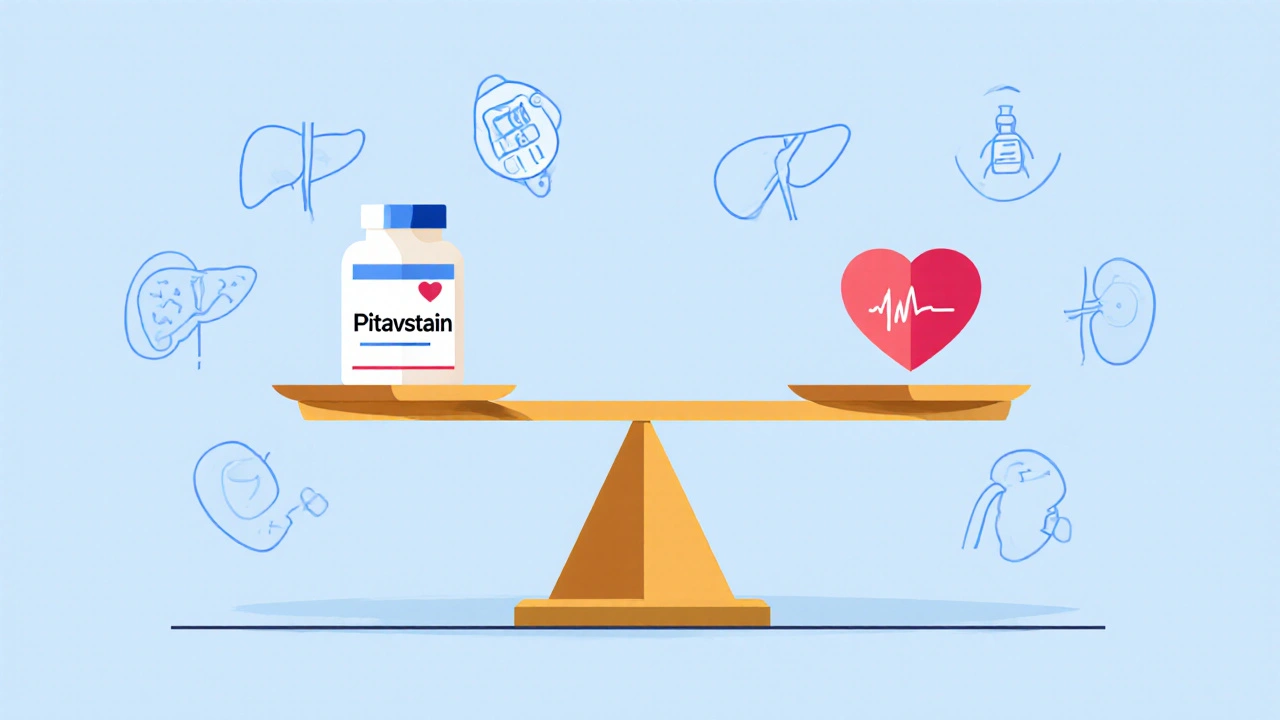
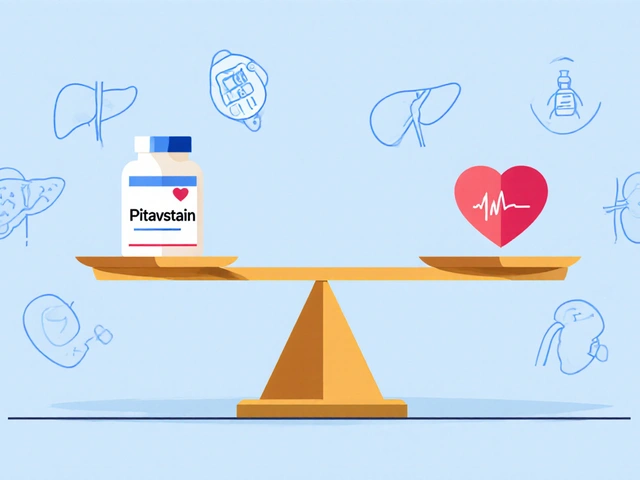
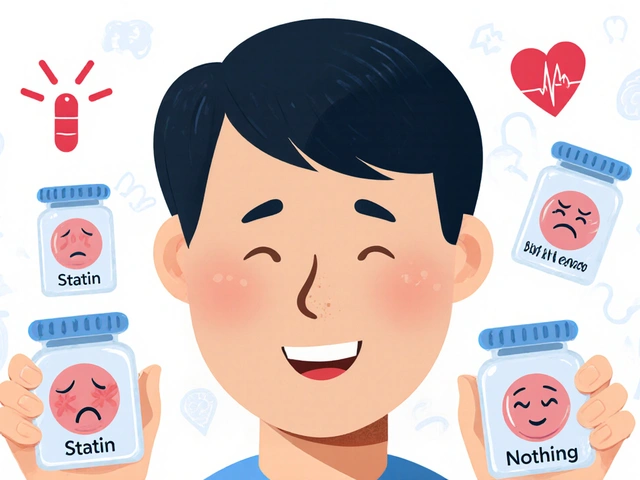
Andrew Baggley
November 19, 2025 AT 13:59Doctors act like statins are all the same. They’re not. Pitavastatin’s the quiet hero in the corner nobody talks about until you need it.
Joe Durham
November 19, 2025 AT 21:35harenee hanapi
November 20, 2025 AT 04:44Christopher Robinson
November 20, 2025 AT 05:39James Ó Nuanáin
November 21, 2025 AT 06:32Nick Lesieur
November 23, 2025 AT 02:15Dion Hetemi
November 24, 2025 AT 19:09Kara Binning
November 25, 2025 AT 21:02river weiss
November 26, 2025 AT 16:09